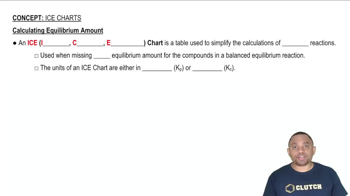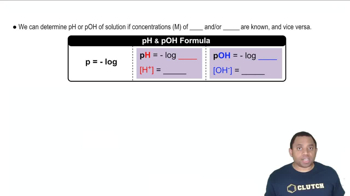Here are the essential concepts you must grasp in order to answer the question correctly.
Weak Bases and pKb
Weak bases are substances that partially ionize in solution to produce hydroxide ions (OH-) and their conjugate acids. The strength of a weak base is often expressed using the pKb value, which is the negative logarithm of the base dissociation constant (Kb). A higher pKb indicates a weaker base. In this case, morpholine has a pKb of 5.68, indicating it does not fully dissociate in solution.
Recommended video:
Equilibrium and ICE Tables
In chemical reactions, especially in weak acid-base equilibria, the concept of equilibrium is crucial. An ICE (Initial, Change, Equilibrium) table helps organize the concentrations of reactants and products at different stages of the reaction. For morpholine, we can set up an ICE table to track the initial concentration of morpholine, the change as it ionizes, and the equilibrium concentrations of morpholine, its conjugate acid, and hydroxide ions.
Recommended video:
ICE Charts and Equilibrium Amount
pH and pOH Calculations
pH is a measure of the acidity or basicity of a solution, calculated as the negative logarithm of the hydrogen ion concentration. For basic solutions, pOH can also be calculated, which is related to pH by the equation pH + pOH = 14. In this problem, after determining the concentration of hydroxide ions (OH-) from the equilibrium expression, we can calculate the pOH and subsequently the pH of the morpholine solution.
Recommended video:
 Verified step by step guidance
Verified step by step guidance

